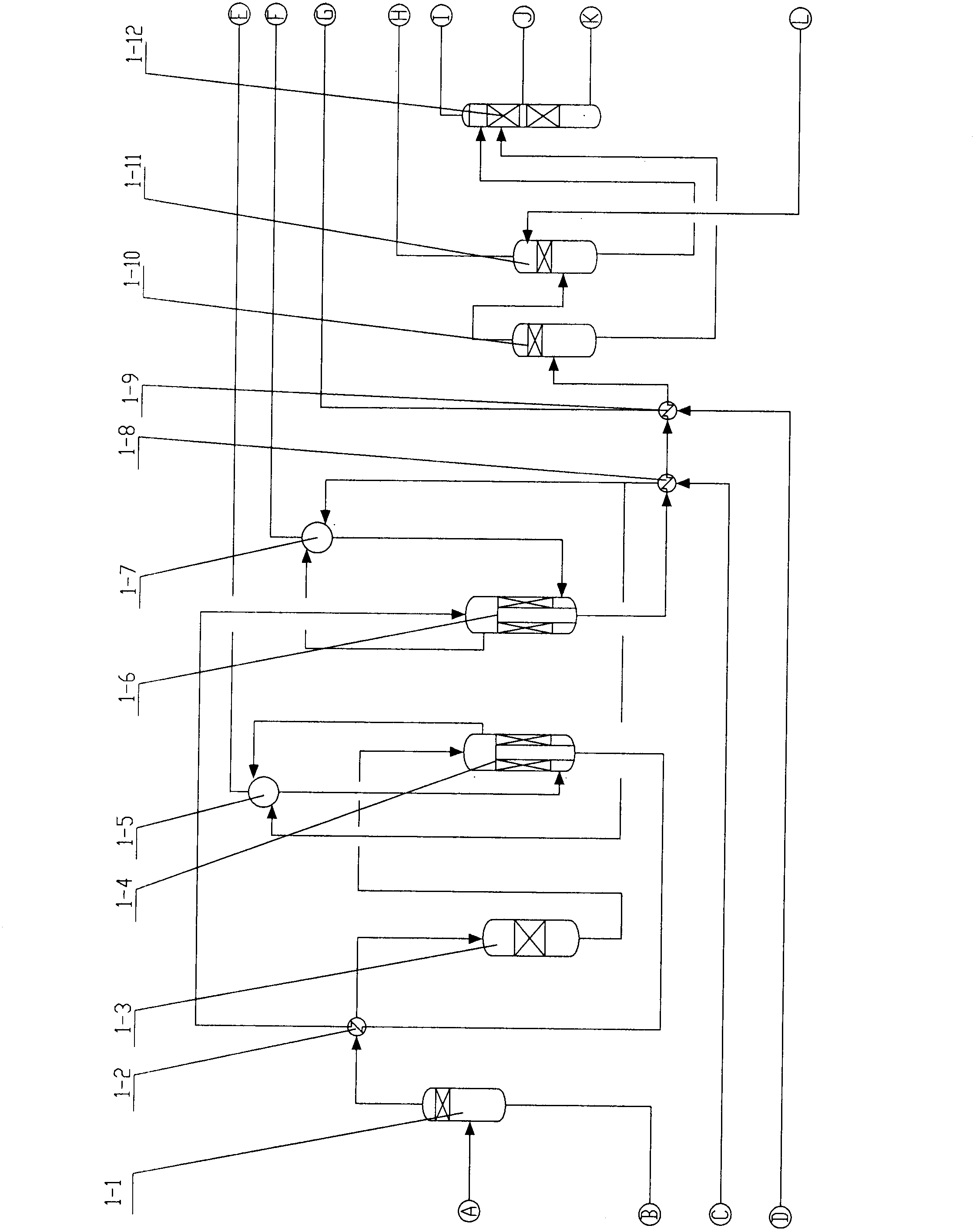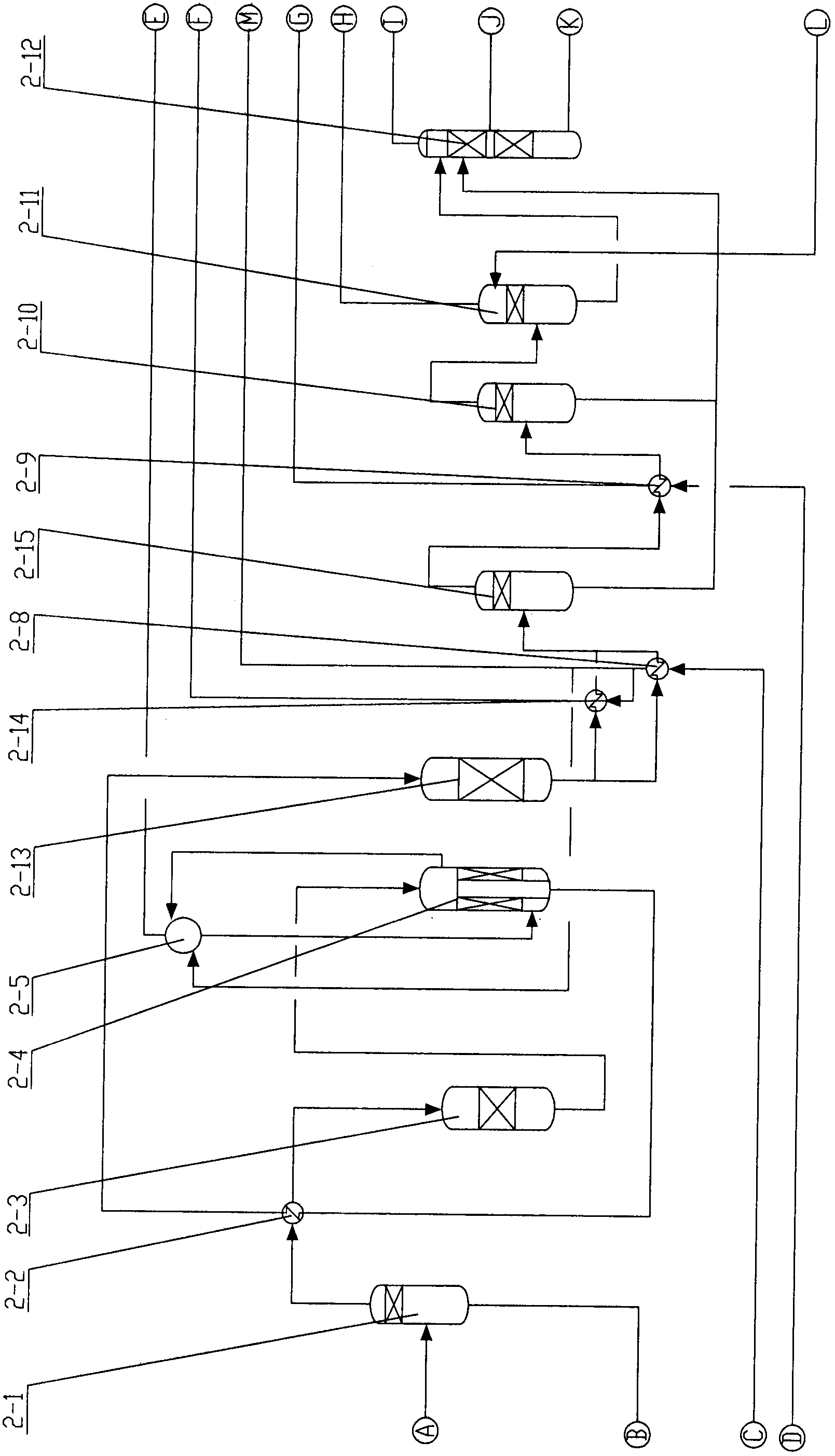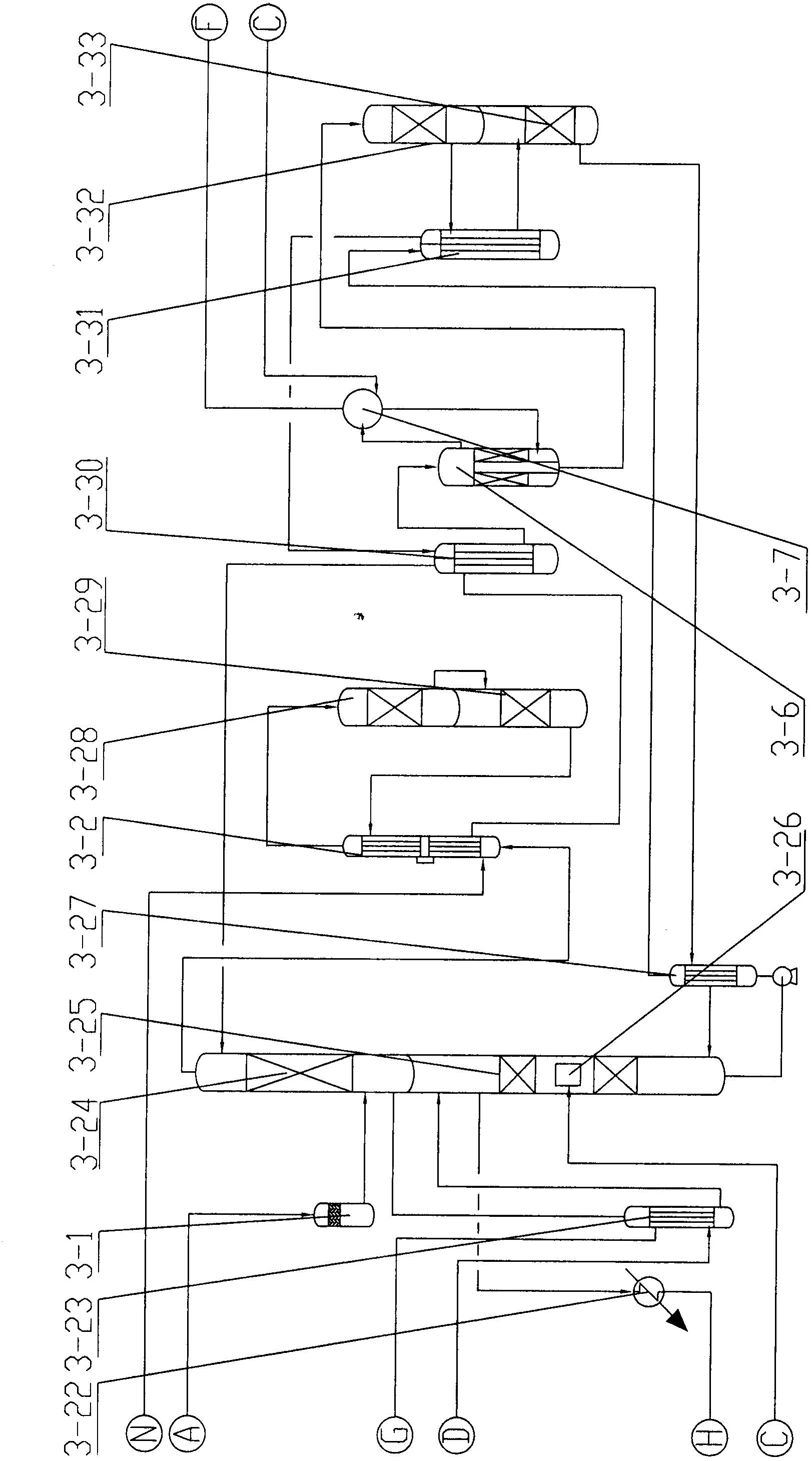Water heat-transfer shift process for by-product high-grade steam energy-saving deep conversion
A high-grade, steam technology, applied in the field of , can solve the problems of over-temperature catalyst, hidden danger of system operation, short service life of catalyst, etc., and achieve the effect of facilitating self-unloading of catalyst, preventing dew point corrosion, and easy temperature control.
- Summary
- Abstract
- Description
- Claims
- Application Information
AI Technical Summary
Problems solved by technology
Method used
Image
Examples
Embodiment 1
[0054] as attached figure 1 As shown, the raw material gas from the gasification device enters the interior of 1# gas-liquid separator 1-1 for downward swirling (the gas swirls downward to facilitate separation), and after the dust and water are separated, they reverse 180° and enter the center pipe, and then It is further filtered through a stainless steel wire mesh to ensure that the gas is clean.
[0055] The raw gas coming out of 1# liquid separator 1-1 enters the raw gas heater 1-2 for heat exchange, and when the temperature reaches 240°C (feed temperature ≥ dew point temperature 30°C), it enters the detoxification tank 1-3, and the gas passes through the upper detoxification tank. After the poison is detoxified, it directly enters a small amount of catalyst bed in the lower part for reaction, and the temperature rises to 300°C (the reaction temperature is controlled by the amount of catalyst loading ≤ 300°C), and this part of the catalyst is used to further absorb and re...
Embodiment 2
[0062] as attached figure 2 As shown, the raw material gas from the gasification device enters the interior of 1# gas-liquid separator 2-1 for downward swirl flow (the gas swirls downward to facilitate separation), and the dust and water are separated and reversed 180° into the center pipe, and then It is further filtered through a stainless steel wire mesh to ensure that the gas is clean.
[0063] The raw material gas from the 1# liquid separator 2-1 enters the raw gas heater 2-2 for heat exchange, and when the temperature reaches 300°C (feed temperature ≥ dew point temperature 30°C), it enters the detoxification tank 2-3, and the gas passes through the upper detoxification tank. After the poison is detoxified, it directly enters a small amount of catalyst bed in the lower part for reaction, and the temperature rises to ~300°C. This part of the catalyst is used to further absorb and remove harmful substances in the water gas under high temperature conditions. The gas exitin...
Embodiment 3
[0077] as attached image 3 As shown: the raw gas from the gasification device enters the interior of 1# gas-liquid separator 3-1 for downward swirling (the gas swirls downward to facilitate separation), and after the dust and water are separated, they reverse 180° and enter the center pipe, and then It is further filtered through a stainless steel wire mesh to ensure that the gas is clean.
[0078]The raw material gas after separation of oil and water enters the saturation tower 3-24 to exchange heat with the hot water entering the tower for humidification, and the gas exiting the saturation tower 3-24 is heated to 300-350°C by the raw gas heater 3-2 and enters the first stage of the intermediate transformation furnace Layer 3-28 reacts, and then enters the second stage of medium transformation bed layer 3-29 for reaction. After the reaction, the transformed gas enters the raw material gas heater 3-2 at 420-440°C, and enters the first-stage cooler 3 after the temperature drop...
PUM
 Login to View More
Login to View More Abstract
Description
Claims
Application Information
 Login to View More
Login to View More - R&D
- Intellectual Property
- Life Sciences
- Materials
- Tech Scout
- Unparalleled Data Quality
- Higher Quality Content
- 60% Fewer Hallucinations
Browse by: Latest US Patents, China's latest patents, Technical Efficacy Thesaurus, Application Domain, Technology Topic, Popular Technical Reports.
© 2025 PatSnap. All rights reserved.Legal|Privacy policy|Modern Slavery Act Transparency Statement|Sitemap|About US| Contact US: help@patsnap.com



